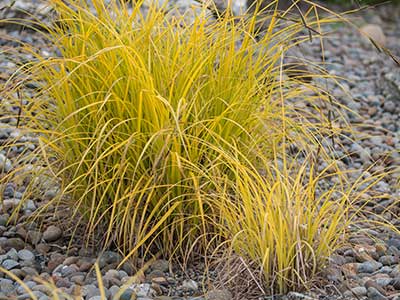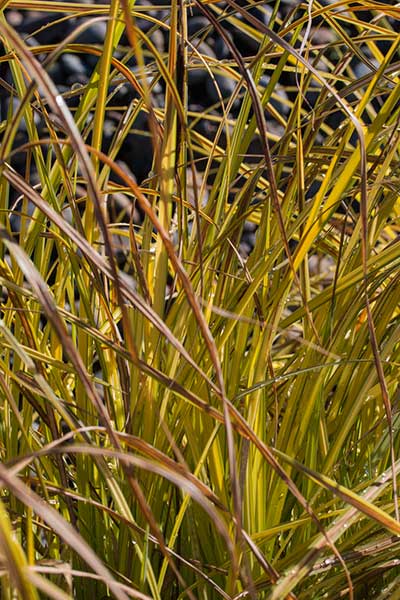Carex 'Bowles Golden'
- Scientific Name: Carex elata 'Bowles Golden'
- Garden: Rain Garden
- Plant Type: Grass/Sedge
- Evergreen/Deciduous: Evergreen
- Sun/Shade Exposure: Full Sun to Part Shade
- Moisture Requirements: Dry to Wet
Plant Information
Carex elata ‘Bowles Golden’
Also known as ‘Aurea’ this sedge will give you a jolt of yellow with its golden leaves and green margins. It is deciduous liking full to partial sun and moist soil, to 30 inches tall and wide.
The genus Carex is a member of the sedge family and is a large genus with over 1,000 different species found throughout the world. They are a part of the same family as Cyperus papyrus, the plant the ancient Egyptians used to make paper.
They look like grasses, but botanically are called sedges because of certain features. A little rhyme goes “sedges have edges…” because some of them have sharp cutting edges and the stems make a triangular cross-section. Also, unlike the ornamental grasses, the flowers of sedges are generally insignificant, so they are chiefly foliage plants.
Carex form clumps or tufts of grass-like foliage which comes in a range of colors from greens, blues, yellows, browns, oranges and some striking variegations.
Some Carex spread by rhizomes that will slowly creep along the ground and make good ground-cover options, although none are invasive or aggressive. A gardener can find a Carex for sun or shade, for a boggy area or a dry spot.
Because they are evergreen they are great choices for year-round interest in the garden and they also make fantastic container plants either as a focal point or an accent.
Culture: Carex are very easy grass-like plants like tend to like damp, sunny locations although some will adapt to dry garden conditions and some species can handle some shade.
Pests and Diseases: None here in the Pacific Northwest, although some of the brown-leaved species from New Zealand are susceptible to root-mealy bugs in hot climates
Maintenance: Most Carex species are evergreen so it is a good idea to periodically cut them back in the spring to rejuvenate the plant and remove winter damaged foliage.
For deciduous species cut back old growth in spring when you see the new growth starting.
Propagation: Divide clumps in late spring.
Data Source
www.portlandnursery.comPlant Photos





